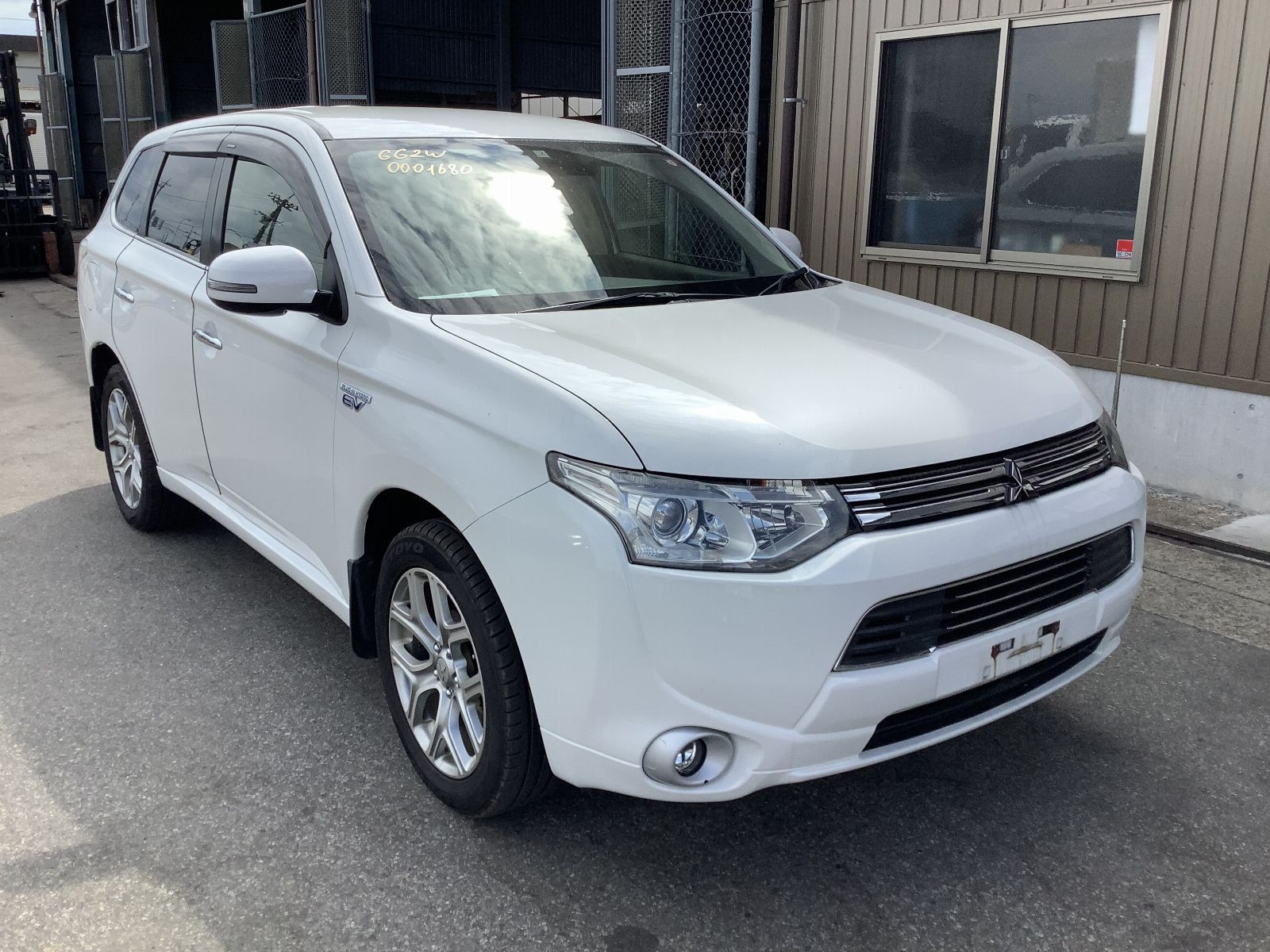
Introduction to Mitsubishi Motors
Mitsubishi Motors Corporation is one of the better known Japanese car makers in the market today. The company is based in Tokyo, Japan. In 2011, Mitsubishi Motors was the sixth-largest Japanese automaker and the 19th-largest worldwide by production. Mitsubishi Motors is formerly the automotive division of Mitsubishi Heavy Industries.
The story of Mitsubishi Motors begins with the visionaries who laid the foundation for its success. Yataro Iwasaki, the founder of the Mitsubishi Group, established the company as a shipping firm in the late 19th century.
In 1917, the Mitsubishi Shipbuilding Co introduced the first Japanese production car which was named the Mitsubishi Model A. The Model A was a four-door sedan that could comfortably sit seven passengers and was heavily based on the Fiat Tipo 3. The car was hand built and was intended to be sold as a luxury vehicle for the Japanese elite.
The Model A was promoted by Kiyota Iwasaki who was the fourth president of the company and nephew of the founder. He recognized the potential of automobiles and initiated the diversification of the Mitsubishi business empire into the automotive industry. Koyata's foresight and determination paved the way for the creation of Mitsubishi Motors.
Mitsubishi Motors went public in 1988, ending its status as the only one of Japan's 11 auto manufacturers to be privately held.
Mitsubishi Motors Through World Wars and Economic Shifts
The world wars and economic shifts posed significant challenges for Mitsubishi Motors, but the company adapted and thrived in the face of adversity. During World War II, Mitsubishi Motors shifted its production focus to military vehicles and aircraft engines to support Japan's war efforts. However, the aftermath of the war brought about a period of rebuilding and restructuring, during which Mitsubishi Motors had to find its footing once again.
In the post-war era, Mitsubishi Motors faced economic shifts and changing consumer demands. The company responded by introducing compact cars and fuel-efficient models to cater to a more environmentally conscious market. Mitsubishi Motors also expanded its global presence, establishing manufacturing facilities in various countries. This resilience and adaptability allowed Mitsubishi Motors to overcome challenges and emerge as a dominant player in the automotive industry.
Mitsubishi's 1960s Models
In 1960, the company introduced the Mitsubishi 500 which would be the first passenger car of the company since the Model A. With a monocoque body construction and rear-engine/rear-wheel drive layout, the spare tire and fuel tank were housed under the front hood. It featured a practical and simple design with a single wiper, no indicators on front or rear except for a single set mounted on the side pillar.
The Mitsubishi 360 K-light van was developed as a trailblazer for Mitsubishi four-wheel K-cars. Targeting small and medium-size businesses, the new car was designed as a commercial vehicle for transporting small loads of goods, people and for communications. It was launched in April 1961 after being shown at the Tokyo Motor Show.
Introduced in 1962, the Mitsubishi Colt 600 was the first Mitsubishi model to bear the Colt name. Colt 600 is recognized as being a prime mover in driving the company's growth.
In October 1962, Mitsubishi introduced the first passenger K-car to the market under the name of Minica, which was derived from the Mitsubishi 360 (K-light van). The model was powered by a 2-stroke air-cooled engine.
In August 1966 was launched the first generation Minicab Truck. Its suspension arrangement delivered outstanding ride comfort together with excellent payload capability. The first Minicab Truck came only with a single cargo gate. On its basis the Delica Truck was developed in 1968.
Mitsubishi's 1970s Models
The 1970s marked a significant period of growth and innovation for Mitsubishi Motors. During this time, the brand introduced several notable models that left a lasting impact on the automotive industry.
The Galant Coupe GTX-1 was introduced at the Tokyo Motor Show in 1969 where it created a sensation. Featuring long nose and short deck proportions and sporty, styling, the car was developed to gain a foothold in the market for cutting-edge specialty models. After further development, it was launched in 1970 bearing the Galant GTO nameplate.
The Lancer, a compact passenger car introduced in February 1973, takes its name from a soldier of the cavalry regiment armed with a lance in the knightly age in Europe. The styling was aerodynamically oriented, giving the Lancer a long low "aero nose" with superior drag characteristics, a tumblehome, and wide turn-under proportion. The Lancer also incorporated a sturdy and secure monocoque body structure for safety and durability.
The Mirage was announced in time for the Tokyo Motor Show in October 1977 and was launched in March 1978. The body design was developed around a stable trapezoidal shape and featured a low-drag slant nose and flush surface panels. As Mitsubishi Motors introduced their initial front-engine and front-drive model, they needed to incorporate an "idle" transfer shaft and a reverse rotation gear to position the rear-drive engine in a transverse manner. This configuration led to the introduction of the Super Shift transmission, featuring a secondary shift lever that enabled the driver to switch between Power and Economy modes. This allowed for both high performance and fuel efficiency. Furthermore, the Mirage featured independent suspension on all four wheels, utilizing an innovative U-type multi-link setup at the rear.
Mitsubishi's 1980s Models
March 1982 the Tredia 4-door sedan and the Cordia 2-door coupe, both front-engine / front-drive (FWD) cars were launched. Mitsubishi Motors' second FWD models were developed to a concept of providing a roomy interior within compact exterior lines and of reducing vehicle weight. Their innovative styling was designed to reduce aerodynamic drag to the minimum using a wedged shape, flush surfaces and even concealed lip rain moldings which ran inboard the roof edge.
The Starion is Mitsubishi Motors' fourth sports model, following the Galant GTO, Galant FTO and Lancer Celeste. It was launched in May 1982 the Starion was designed wedge-shaped with slant nose and short ducktail proportions.
In 1982, the Mitsubishi brand was introduced to the American market for the first time. The Tredia sedan and the Cordia and Starion coupes were initially sold in 22 states.
Mitsubishi in the 90s: A Golden Era for the Brand
The 1990s marked a golden era for Mitsubishi Motors, where the brand experienced considerable success and recognition. During this period, Mitsubishi Motors introduced several iconic models that achieved both critical acclaim and commercial success. The Mitsubishi Eclipse, with its sleek design and powerful performance, became a symbol of the brand's prowess. Additionally, the Mitsubishi Lancer Evolution series solidified the company's reputation in the rally racing scene.
The 90s also witnessed Mitsubishi Motors' technological advancements, particularly in the field of engine technology. The brand's innovative turbocharged engines, often found in their high-performance models, became synonymous with power and speed. Mitsubishi Motors' success during this era laid the foundation for its future endeavors and cemented its status as a formidable player in the automotive industry.
Evolution of Mitsubishi Motors' Automotive Technology
Mitsubishi Motors has been a pioneer in turbocharging technology, introducing turbocharged engines in its vehicles long before it became a common feature in the industry. This commitment to performance and efficiency has made Mitsubishi cars synonymous with power and exhilarating driving experiences. Moreover, the brand has been at the forefront of electric and hybrid vehicle development, offering environmentally friendly options to consumers.
In recent years, Mitsubishi Motors has also made significant strides in the development of electric and hybrid vehicles. The Mitsubishi Outlander PHEV, for instance, was one of the first plug-in hybrid SUVs to enter the market. This commitment to sustainable mobility aligns with the brand's vision of a greener and more environmentally friendly future.












